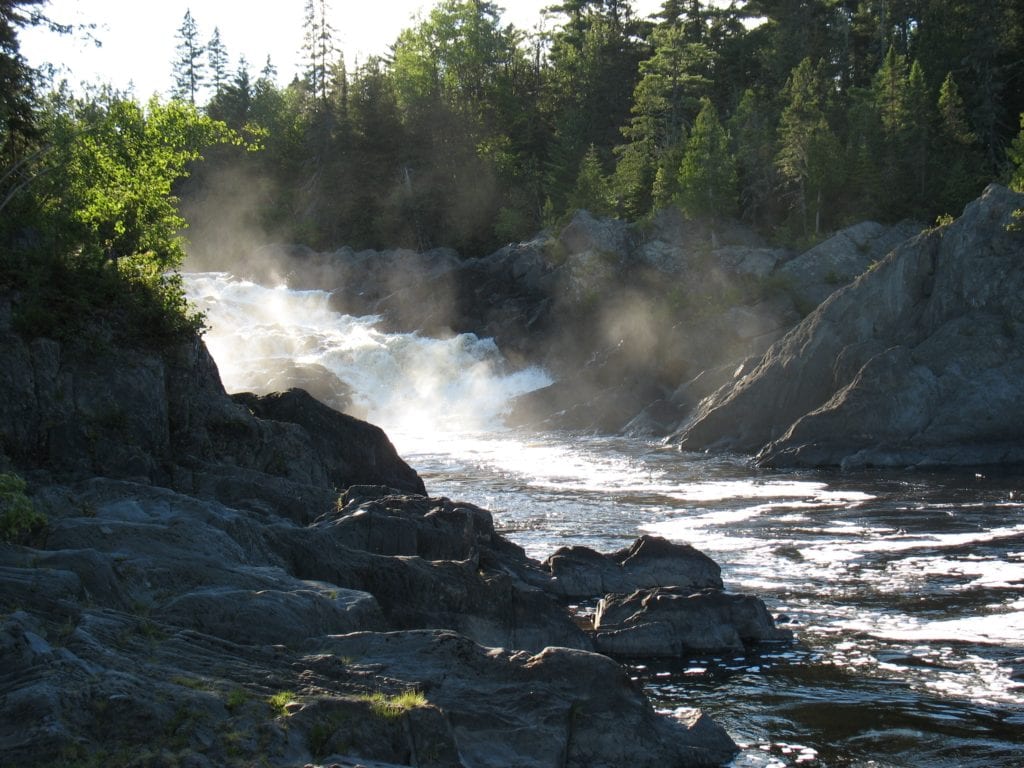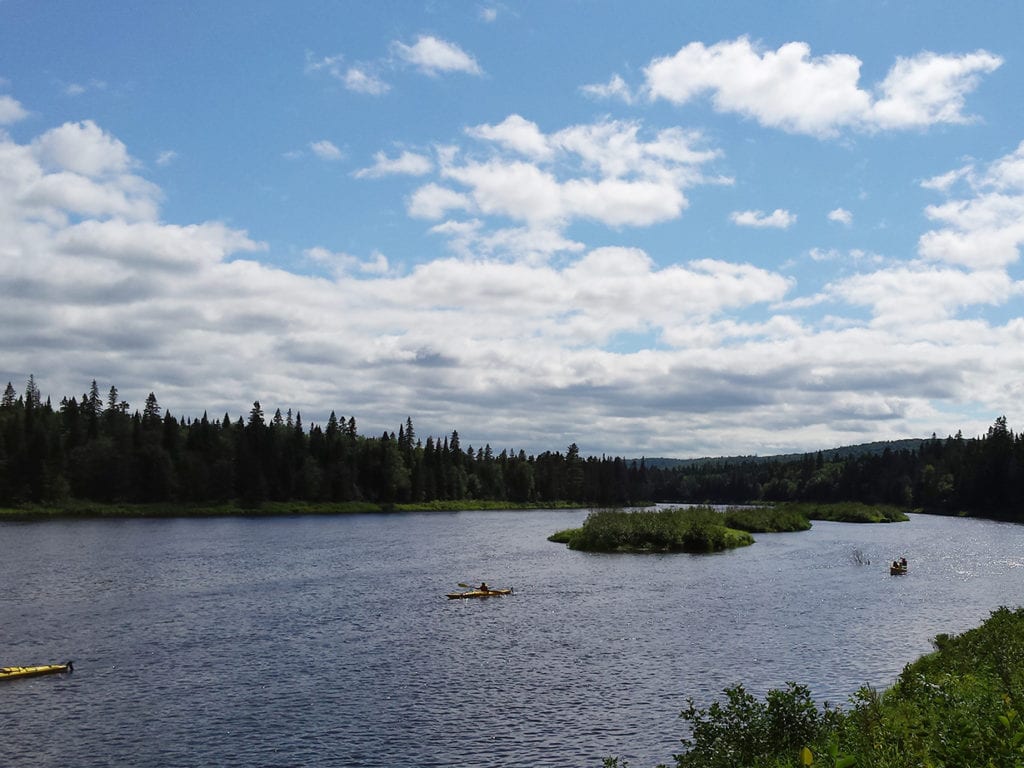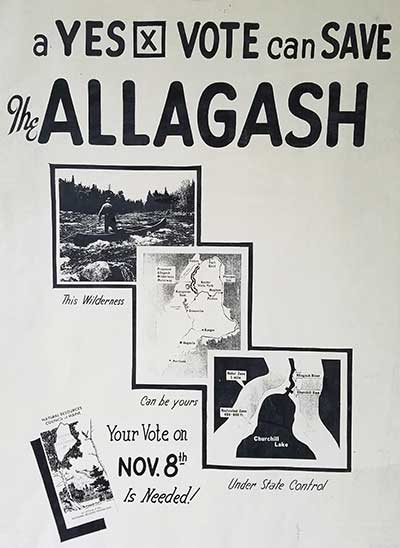The Allagash Wilderness Waterway is a treasure of northern Maine. The two of us have, collectively, canoed the full length or significant parts of it a dozen times since it was designated a Wild and Scenic River by the federal government in 1970. The longest trips begin either at Telos or Chamberlain Lakes—with a side trip to Allagash Lake, where no motorized boating is allowed—or on tributaries upstream of Allagash Lake.
The Allagash provides the best opportunity in New England for a complete getaway for a couple of weeks. Spending two weeks on the lakes and river allows time to explore some of the tributaries, adjacent stands of old growth forest, hiking trails providing scenic views over the landscape, and remnants of the region’s past logging history. Here we have enjoyed watching eagles soar, moose munch grasses in the marshes, rain pelt our canoes, and sun break through the clouds again as we drift in silent wonder.

Allagash Falls. Photo by Brownie Carson
While there are many other wonderful lakes and rivers in Maine to paddle (and we have paddled lots of them!), the Allagash Wilderness Waterway is unique in diverse ways. Four years after Maine people authorized a $1.5 million bond to buy the Allagash lakes and river corridor, the federal government designated it the nation’s first State-managed, federally designated Wild and Scenic River.
It is the only river in the state that is protected for virtually its entire length, from its headwater tributaries and lakes downstream almost to the Village of Allagash and the river’s confluence with the St. John River. Its many large and beautiful headwater lakes provide water into the river so that paddlers can paddle the full length of the Waterway throughout the entire open water season except in unusually dry years.

Allagash Wilderness Waterway. Photo by Lisa Pohlmann
Those same lakes and distinct river sections of the Waterway provide a wide variety of natural habitats and recreational opportunities, from lazy swims and fishing in big lakes to adrenaline-pumping, fast-flowing rapids.
We owe this fantastic and unique experience to our predecessors who began the work to protect the Allagash River 60 years ago. The Natural Resources Council of Maine was founded in 1959 by a small, diverse group of Mainers who knew that the proposed Rankin Rapids and Dickey-Lincoln dam projects on the St. John River would not only ruin that river, but also the Allagash that flows north into the St. John. They incorporated NRCM on June 25 and, over the years, became a serious force for environmental protection across the state. In fact, NRCM has become one of the strongest state-based environmental advocacy groups in the country.

We are proud to be on the staff at NRCM—Cathy for nearly 29 years and Lisa for nearly 11 years—working diligently to protect the clean air and water, and abundant forests and wildlife that Mainers love and visitors flock to each year. We know the importance of this legacy to NRCM, to the state of Maine, and to all of the paddlers from all over the world who are looking for getaways and finding them increasingly rare. That’s why, 60 years later, we continue to work to protect the Allagash from threats that would ruin its wilderness character. We know the importance of this legacy.
—by NRCM CEO Lisa Pohlmann & NRCM Forests & Wildlife Director and Senior Staff Attorney Cathy Johnson
Originally published in 2019 edition of Explore Maine
Banner photo by Lisa Pohlmann









